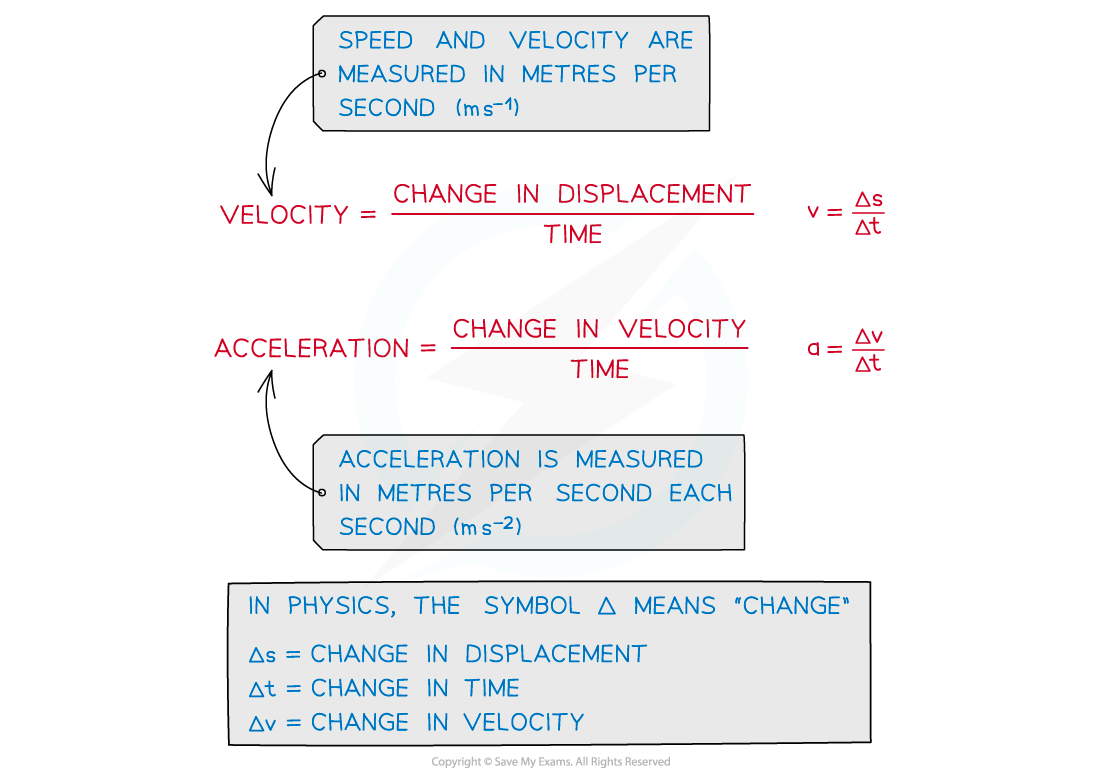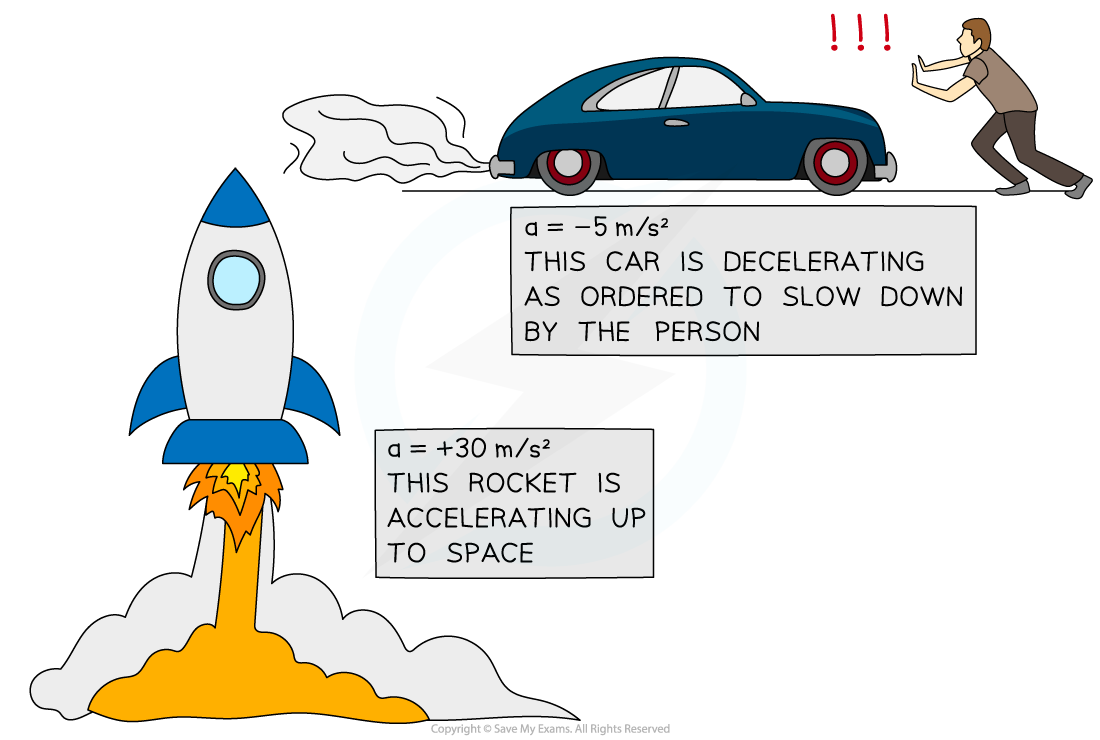Acceleration (DP IB Physics): Revision Note
Acceleration
Acceleration is defined as:
The rate of change of velocity
Acceleration is a vector quantity and is measured in metres per second squared (m s–2)
It describes how much an object's velocity changes every second
The average acceleration of an object can be calculated using:
Where:
= average acceleration (m s–2)
= change in velocity (m s–1)
= total time taken (s)
The change in velocity is the difference between the initial and final velocity, as written below:
change in velocity = final velocity − initial velocity
Equations linking displacement, velocity, and acceleration

Instantaneous Acceleration
The instantaneous acceleration is the acceleration of an object at any given point in time
This could be for an object with a constantly changing acceleration
An object accelerating is shown by a curved line on a velocity-time graph
What is a negative acceleration called?
The acceleration of an object can be positive or negative, depending on whether the object is speeding up or slowing down
If an object is speeding up, its acceleration is positive
If an object is slowing down, its acceleration is negative (deceleration)
However, acceleration can also be negative if it is accelerating in the negative direction

A rocket speeding up (accelerating) and a car slowing down (decelerating)
Worked Example
A Japanese bullet train decelerates at a constant rate in a straight line.
The velocity of the train decreases from an initial velocity of 50 m s–1 to a final velocity of 42 m s–1 in 30 seconds.
(a) Calculate the change in velocity of the train.
(b) Calculate the deceleration of the train, and explain how your answer shows the train is slowing down.
Answer:
(a)
The change in velocity is equal to
Where:
Initial velocity, u = 50 m s–1
Final velocity, v = 42 m s–1
= 42 − 50 = −8 m s–1
(b)
Acceleration is equal to
Where the time taken is Δt = 30 s
The answer is negative, which indicates the train is slowing down
Examiner Tips and Tricks
Remember the units for acceleration are metres per second squared, m s–2. In other words, acceleration measures how much the velocity (in m s–1) changes every second, (m s–1) s–1

Unlock more, it's free!
Did this page help you?